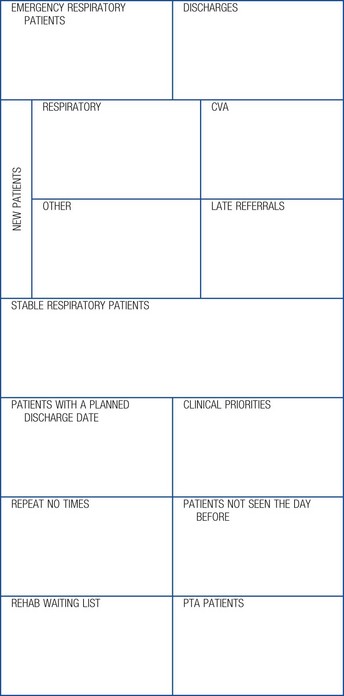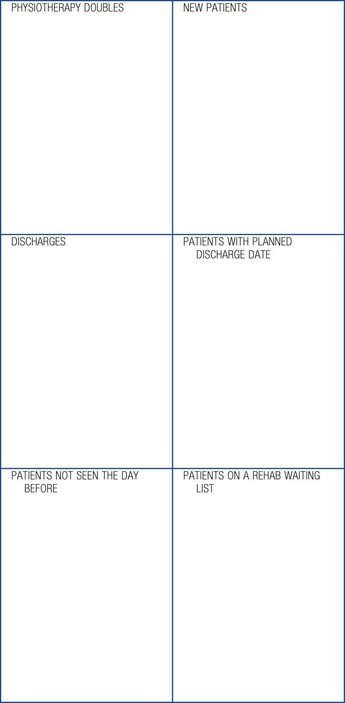Chapter 9 E-materials
Appendix 9.1
Guidelines for prioritisation sheet
For any patient you go and see, remember to write your name against the patient’s name.
PTA patients
• Patients for maintenance work, progression of mobility, passive stretches. These patients MUST be given sit to stand programme and strengthening or balance exercises (this is more important than mobility practice).
• For patients who are doubles, PTAs can go through bed or chair exercises with the patients.
Case Study 9.1
HPC
• Transferred to an acute general medicine ward from the neurosurgical unit after having a Grade V subarachnoid haemorrhage 2 months previously.
• The patient had been assessed and treated by a rotational band 5 on the ward.
• During this time the patient developed diarrhoea and was unable to sit out in the cirrus chair provided by the OT.
• A stretching programme was devised for the PTA to carry out during the period of bed rest and this was continued for 7 weeks.
• Once the patient’s diarrhoea had stopped, they were able to start sitting out again.
• A joint assessment was carried out with the OT to ensure that the seating remained appropriate in view of her not having been out of bed for 7 weeks.
• The medical team requested that the patient have intensive physiotherapy.
• The band 5 explained to the house officer that due to the size of her case load she had delegated treatment to the PTA who was carrying out a stretching programme. The band 5 discussed what was realistically possible in terms of physiotherapy input, which improved the understanding of the medical team in this case.
• Whilst carrying out the stretching programme, the PTA noticed that the patient’s legs were becoming increasingly tight.
• The band 5 was informed who discussed the patient with a senior colleague.
Reassessment
• A joint assessment was carried out and the following noted:
Outcomes
• Problems that arose were addressed as follows:
Stay updated, free articles. Join our Telegram channel

Full access? Get Clinical Tree











